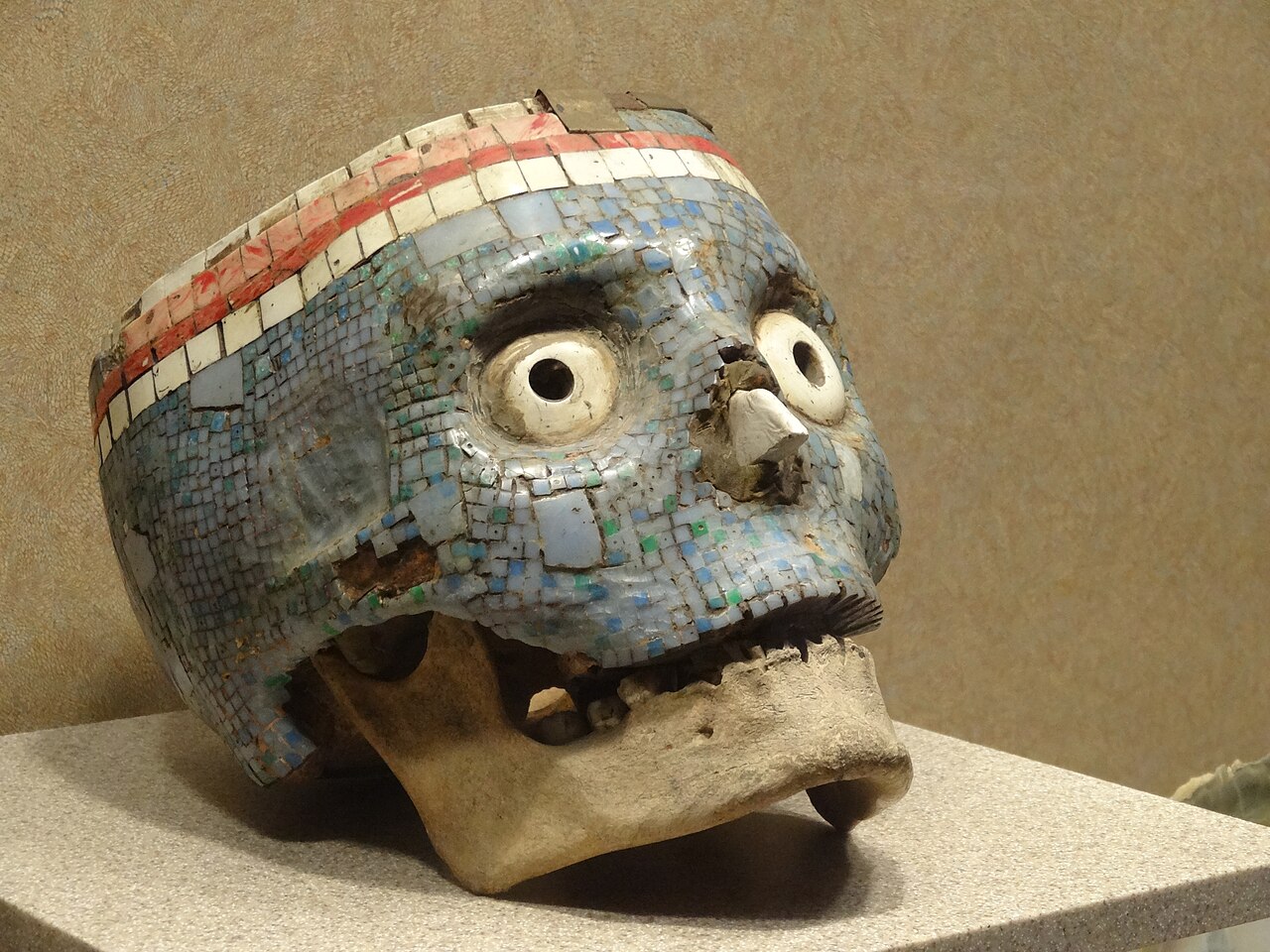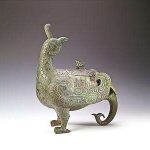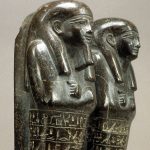Aztec (Mexica) Inlaid Human 𝘴𝘬𝘶𝘭𝘭

This striking artifact is an inlaid human 𝘴𝘬𝘶𝘭𝘭 from the Aztec (Mexica) civilization, dating to ca. 1300–1521 AD, and is part of the National Museum of Anthropology, Mexico City collection.

This remarkable artifact is an inlaid human skull from the Aztec (Mexica) civilization, dating to approximately 1300–1521 AD. Now housed in the National Museum of Anthropology in Mexico City, it is one of the most striking examples of Aztec craftsmanship and ritual art.

The skull is entirely covered with an intricate mosaic of turquoise, shell, and other inlay materials—a technique highly valued in Mesoamerica for its association with divine power and preciousness. The eyes are fashioned from shell discs, giving the piece a dramatic, almost hypnotic expression. A band of red, white, and turquoise tiles crowns the forehead, adding to its vivid visual impact.

Such mosaic skulls were not ordinary objects; they were deeply tied to Aztec religious practices. Skulls like this may have served as trophy skulls, ritual offerings, or cult images dedicated to deities associated with death, renewal, and cosmic order—such as Mictlantecuhtli, the lord of the underworld, or Tezcatlipoca, a major god often linked with the use of precious materials like turquoise.
The skull’s combination of human bone and precious inlay would have conveyed powerful symbolic meaning. Turquoise was associated with rulership, fire, and the heavens, while human remains invoked themes of sacrifice, transformation, and the cyclical nature of life and death.











